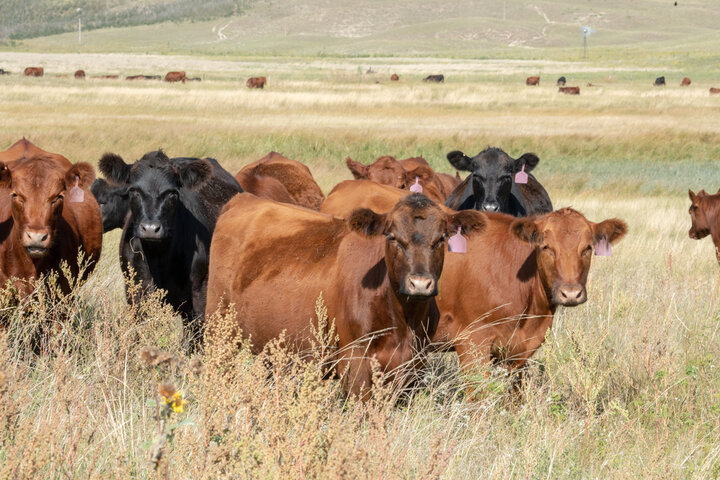With areas across the state either dealing with drought or wet conditions, cow management and limited forage resources may have producers considering options for early weaning and utilizing early pregnancy detection to help make culling and management decisions this year.
Value of Pregnancy Detection and Culling Considerations
Early pregnancy diagnosis allows managers to make decisions on keeping, selling or even re-breeding females. Pregnancy detection via rectal palpation can be determined as early as 35-45 days whereas ultrasonography can determine pregnancy as early as 30 days. One alternative could be the implementation of blood tests, which have been proven to accurately detect pregnancy as early as 28-32 days. To learn more about advantages and disadvantages, please visit the past article to better understand how to approach early pregnancy detection with your herd this summer and fall.
Utilizing pregnancy detection as early as 35 days allows producers to target different markets and conserve forage resources. If producers need to cull cows, some criteria to consider may include physical impairments, older mature cows, cows with low production records or weaning weights, and non-pregnant cows. Learn more about how implementing timely pregnancy detection as a tool can help make decisions in a past webinar: https://youtu.be/OU__mDl8Ty4.
Early Weaning Considerations
As we think about limited forage resources and cow productivity, considering ways to reduce the nutritional demand of lactation can significantly help first-calf heifers and cows. Weaning calves earlier can significantly reduce cow nutrient requirements and decrease dry matter intake, as well as allow available forage to match cow nutrient requirements more closely. Two-year old cows still have a growth requirement which results in additional nutritional demands during lactation. By weaning early, nutritional demands are decreased and allows heifers and cows a chance to regain or maintain body condition in late summer and fall. The difference in forage intake between lactating and non-lactating cows is about 5 pounds of forage per head per day. Additionally, about 10 pounds of forage is conserved for each day a calf is weaned.
Early weaning is typically defined as weaning calves before 150 days of age. In extreme cases, such as drought, calves may be weaned at 45 days of age, but more commonly are over the age of 90 days.
If you are considering early weaning, feeding, management, and marketing options should be considered prior to weaning day. A recent CAP webinar discusses options for early weaning calves and tips on planning and preparing for the process. For more information on weaning calves, producers can access the following NebGuides: NebGuide G2047 Management of Early Weaned Calves or NebGuide G2057 Management, Health, and Nutritional Considerations for Weaned Calves. In addition to early weaning, confined feeding may also be an option if resources need to be conserved. Learn more about confined feeding options from a past webinar: https://youtu.be/PBFA-F6sc7k.
Interviews with the authors of BeefWatch newsletter articles become available throughout the month of publication and are accessible at https://go.unl.edu/podcast. You can subscribe to the BeefWatch newsletter here: http://go.unl.edu/Beefwatch_subscribe
Topics covered:
Backgrounding & feedlot, Backgrounding/stocker/yearling, Nutrition, Breeding, Genetics & selection, Selection & culling, Weather, Drought, Mud management & flooding

